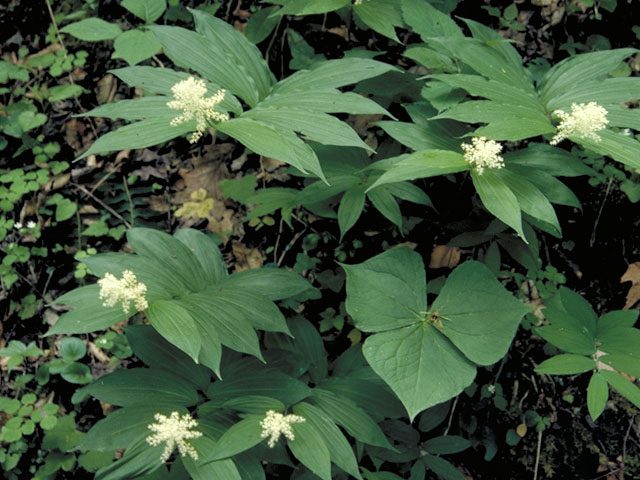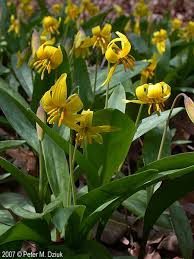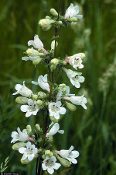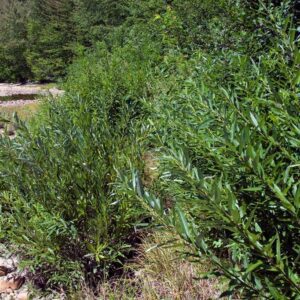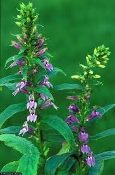Maianthemum racemosum, Feathery False Lily of the Valley, Wholesale Native Bare Root Plants
$7.50
Out of stock
Maianthemum racemosum, Feathery False Lily of the Valley, Wholesale Native Bare Root Plants
(requires a minimum purchase of 5 plants)
5 or more $7.50 each
25 or more $3.75 each
50 or more $2.10 each
300 or more $1.95 each
Wholesale pricing is based on quantity.
For Shipping, Install and additional info please see “About Bare Root“.
Native bare root plants are dug and shipped while dormant, mid November to early spring.
See all available Native Bare Root Perennials
View the native status of this species for your area here: https://plants.usda.gov/home/plantProfile?symbol=MARAR
Order Minimum
There is a minimum order total of $150.00.
before tax (VA residents only) and shipping.
There are NO EXCEPTIONS.
Description
Maianthemum racemosum, Feathery False Lily of the Valley, Wholesale Native Bare Root Plants
Maianthemum racemosum (L.) Link ssp. racemosum
Feathery False Lily Of The Valley, False Spikenard, False Solomon’s Seal, Solomon’s Plume, Smilacina
Liliaceae (Lily Family)
Synonym(s): Convallaria racemosa, Smilacina ciliata, Smilacina flexicaulis, Smilacina racemosa, Smilacina racemosa var. cylindrata, Smilacina racemosa var. lanceolata, Smilacina racemosa var. typica, Vagnera australis, Vagnera racemosa
USDA Symbol: marar
USDA Native Status: L48 (N), CAN (N)
The 1-4 ft., arching, unbranched stems of this widespread perennial bear two rows of elliptic leaves. A many-flowered raceme is at the tip of the stem and is made up of tiny, white flowers. Berries ripen to a pink-red in autumn. Each branched rhizome bears one to several stems. As a landscaping plant, it is most effective when planted in groups of six or more stalks.
The feathery, creamy-white masses of flowers borne at the end of the stem distinguish this species from the true Solomon’s seals (Polygonatum spp.), which have pendulous, axillary, bell-like flowers. The rhizome lacks the seal-like pattern of the true Solomon’s seals, but exhibits circular stem scars. The usual western form is subspecies amplexicaule, with longer flower clusters and shorter leaves than the eastern subspecies. A smaller species, Star-flowered Solomon’s Seal (M. stellatum), found throughout the East except for the coastal states from North Carolina to Texas, has a raceme of larger star-shaped flowers, 1/4″ (6 mm) long, leaves clasping stem, and larger berries; at first the berries are striped with blackish red, eventually becoming completely blackish red.
Plant Characteristics
Duration: Perennial
Habit: Herb
Leaf Complexity: Simple
Fruit Type: Berry
Size Notes: Arching stems up to about 4 feet long.
Flower: Flowers in 1 to 4 inch clusters. Individual flowers tiny.
Fruit: Red, in 1 to 4 inch clusters.
Bloom Information
Bloom Color: White
Bloom Time: Mar , Apr , May , Jun
Distribution
USA: AK , AL , AR , CT , DC , DE , FL , GA , IA , IL , IN , KS , KY , LA , MA , MD , ME , MI , MN , MO , MS , NC , ND , NE , NH , NJ , NM , NY , OH , OK , PA , RI , SC , SD , TN , VA , VT , WI , WV
Canada: BC , MB , NB , NS , ON , PE , QC
Native Distribution: N.S. to AK, s. in the east to GA & TX, in the west through mts. to AZ & s. CA
Native Habitat: Woods; clearings; bluffs
Growing Conditions
Water Use: Medium
Light Requirement: Part Shade , Shade
Soil Moisture: Moist
Soil pH: Acidic (pH<6.8)
Cold Tolerant: yes
Soil Description: Deep, humus-rich, acid soils.
Conditions Comments: Though it prefers moist, deciduous woods, this plant is also found, in a stunted form, growing in drier, shallower soils or open spaces.
Benefit
Use Ornamental: A good shade plant with late spring blossoms.
Use Wildlife: Birds and small mammals eat this plant’s berries. Deer browse leaves.
Conspicuous Flowers: yes
Attracts: Birds
Maianthemum racemosum, Feathery False Lily of the Valley, Wholesale Native Bare Root Plants
(requires a minimum purchase of 5 plants)
5 or more $7.50 each
25 or more $3.75 each
50 or more $2.10 each
300 or more $1.95 each
1000 or more please call.
Wholesale pricing is based on quantity.
For Shipping, Install and additional info please see “About Bare Root“.
Native bare root plants are dug and shipped while dormant, mid November to early spring.
See all available Native Bare Root Perennials
View the native status of this species for your area here: https://plants.usda.gov/home/plantProfile?symbol=MARAR
Related products
-

Erythronium americanum, Yellow Trout lily, Native Bare Root Perennial
$7.00 Add to cart -

Penstemon digitalis, Foxglove Beardtongue, Native Perennial Plant Plugs, Native Wildflowers, Native Pollinator Support Plants, Organically Grown
$7.50 Add to cart -

Salix interior Sandbar Willow 12″ Live Stakes for Erosion Control
$1.10 Add to cart -

Lobelia siphilitica, Great blue lobelia, Native Perennial Plant Plugs, Native Wildflowers, Native Pollinator Support Plants, Organically Grown
$7.50 Add to cart
